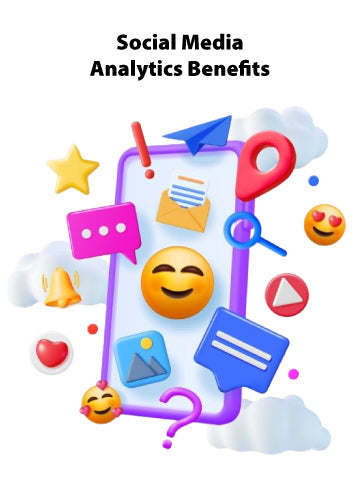In the ever-evolving realm of digital marketing, micro-influencers have emerged as powerful catalysts for brands looking to enhance their reach and engagement with highly targeted audiences. Unlike traditional influencers with millions of followers, micro-influencers typically have a smaller but more dedicated following within specific niches. This guide aims to explore how brands can effectively leverage micro-influencers to achieve their marketing objectives, from increasing brand awareness to driving conversions.
What are Micro-Influencers?
Micro-influencers are individuals who have a modest yet engaged following on social media platforms, typically ranging from 1,000 to 100,000 followers. What sets them apart from macro-influencers or celebrities is their deep connection and influence over a specific community or niche audience. This niche focus allows micro-influencers to cultivate a high level of trust and authenticity with their followers, making their recommendations and endorsements highly impactful.
Why Micro-Influencers Matter for Your Marketing Campaigns
Benefits of Micro-Influencers
Authenticity and Trustworthiness
One of the primary advantages of working with micro-influencers is their authenticity. Unlike larger influencers who may promote various brands, micro-influencers often maintain a more genuine and personal connection with their audience. This authenticity translates into higher levels of trust, making their recommendations more persuasive and effective in driving consumer behavior.
Cost-Effectiveness
Micro-influencers generally charge lower fees compared to macro-influencers or celebrities, making them a cost-effective option for brands with limited marketing budgets. This affordability allows brands to collaborate with multiple micro-influencers simultaneously, diversifying their reach and engagement without breaking the bank.
Niche Audience Targeting
Micro-influencers are experts at targeting specific niche audiences. Whether it's fitness enthusiasts, beauty aficionados, or tech enthusiasts, micro-influencers have cultivated communities with shared interests and passions. This niche targeting ensures that your brand message reaches individuals who are more likely to resonate with your products or services, resulting in higher quality leads and conversions.
How to Identify the Right Micro-Influencers for Your Campaign
Understanding Your Target Audience
Before selecting micro-influencers, it's crucial to have a clear understanding of your target audience demographics, interests, and behavior. By aligning your influencer strategy with your audience profile, you can identify influencers whose followers closely match your ideal customer persona.
Researching Potential Influencers
Social Media Platforms to Consider
Different social media platforms cater to various demographics and content formats. Instagram, TikTok, YouTube, and Twitter are popular platforms where micro-influencers thrive. Choose platforms that align with your brand's goals and where your target audience is most active.
Tools for Identifying Micro-Influencers
Several tools and platforms specialize in influencer marketing analytics and discovery. Tools like Hootsuite, BuzzSumo, and Upfluence provide insights into influencer reach, engagement rates, audience demographics, and past collaborations. These tools streamline the process of finding suitable micro-influencers for your campaign.
Engaging Micro-Influencers Effectively
Crafting Your Campaign Message
Tailoring Content for Authenticity
When collaborating with micro-influencers, prioritize authenticity in your campaign messaging. Encourage influencers to create content that resonates with their audience while naturally integrating your brand message. Authenticity fosters genuine connections between influencers and their followers, enhancing the effectiveness of your campaign.
Incorporating Your Brand's Voice
Maintain consistency by providing influencers with brand guidelines and key messaging points. While allowing room for creativity, ensure that the content aligns with your brand's tone, values, and overall marketing strategy. Consistent messaging reinforces brand identity and strengthens consumer trust.
Negotiating with Micro-Influencers
Establishing Clear Objectives
Define clear campaign objectives, such as increasing brand awareness, driving website traffic, or boosting sales. Communicate these objectives transparently with micro-influencers to align expectations and measure success effectively. Clear objectives guide influencers in crafting content that supports your marketing goals.
Setting Realistic Expectations
Be realistic about the outcomes of your influencer campaign. Micro-influencer partnerships can generate meaningful engagement and brand advocacy, but they may not result in overnight success. Set achievable benchmarks and timelines based on your campaign objectives and budget constraints.
Compensation Models
Negotiate compensation based on factors like influencer reach, engagement rates, content deliverables, and exclusivity agreements. Compensation models may include flat fees, performance-based incentives, product gifting, or affiliate partnerships. Tailor compensation to reflect the influencer's contribution and the campaign's expected impact.
Launching Your Campaign
Campaign Execution Strategies
Implement a structured timeline for content creation, approval, and publication. Coordinate with micro-influencers to schedule content posts for optimal reach and engagement times. Monitor campaign performance in real-time using analytics tools to identify trends, adjust strategies, and maximize campaign effectiveness.
Content Scheduling and Posting Frequency
Coordinate content schedules to maintain campaign momentum and audience engagement. Balance posting frequency to avoid audience fatigue while maintaining consistent visibility throughout the campaign period.
Monitoring and Analytics
Use social media analytics tools to track key performance indicators (KPIs) such as likes, comments, shares, and click-through rates (CTRs). Analyze audience demographics, engagement trends, and content performance to refine strategies and optimize future campaigns.
Measuring the Success of Your Micro-Influencer Campaign
Key Performance Indicators (KPIs) to Track
Engagement Metrics
Measure engagement metrics like likes, comments, shares, and mentions generated by influencer posts. High engagement indicates content resonance and audience interaction, reflecting the effectiveness of your influencer partnerships.
Reach and Impressions
Evaluate reach and impressions to assess the campaign's overall visibility and audience exposure. Track the number of views, impressions, and unique users reached by influencer content across different platforms.
Conversion Rates
Monitor conversion rates to gauge the campaign's impact on driving consumer actions such as website visits, sign-ups, purchases, or downloads. Calculate conversion rates from influencer-generated traffic to measure campaign ROI and effectiveness.
Challenges and Pitfalls to Avoid
Issues with Inauthenticity
Maintain authenticity by aligning influencer partnerships with genuine brand values and audience expectations. Avoid promoting products or messages that contradict influencers' established credibility or audience trust.
Overlooking Legal and Disclosure Requirements
Adhere to legal guidelines and disclosure requirements mandated by regulatory bodies (e.g., FTC guidelines for sponsored content). Ensure influencers clearly disclose their relationship with your brand to maintain transparency and consumer trust.
Future Trends in Micro-Influencer Marketing
AI and Influencer Matching
Explore AI-driven influencer marketing platforms that use machine learning algorithms to match brands with suitable micro-influencers based on audience demographics, content preferences, and engagement metrics. AI enhances efficiency in influencer discovery and campaign optimization.
Micro-Influencers in Emerging Markets
Recognize the growing influence of micro-influencers in emerging markets and niche communities. Capitalize on regional trends, cultural nuances, and localized content strategies to engage diverse audiences and expand market reach effectively.
Conclusion
Micro-influencers offer brands unparalleled opportunities to connect with targeted audiences authentically and drive impactful marketing outcomes. By strategically selecting, engaging, and measuring the success of micro-influencer campaigns, brands can cultivate lasting relationships, amplify brand awareness, and achieve sustainable growth in competitive markets.
FAQs About Micro-Influencer Marketing
1. What defines a micro-influencer?
Micro-influencers typically have between 1,000 to 100,000 followers on social media and specialize in specific niches.
2. How can I find the right micro-influencers for my brand?
Conduct thorough research using tools like influencer marketing platforms and analyze their audience demographics.
3. What are some common mistakes brands make when working with micro-influencers?
Overlooking authenticity, failing to set clear campaign objectives, and disregarding legal disclosures are common pitfalls.
4. What metrics should I use to measure the success of a micro-influencer campaign?
Engagement rates, reach, impressions, and conversion rates are key indicators of campaign success.
5. How do micro-influencers impact SEO efforts?
Micro-influencers can indirectly improve SEO through increased brand mentions, backlinks, and enhanced social signals.


